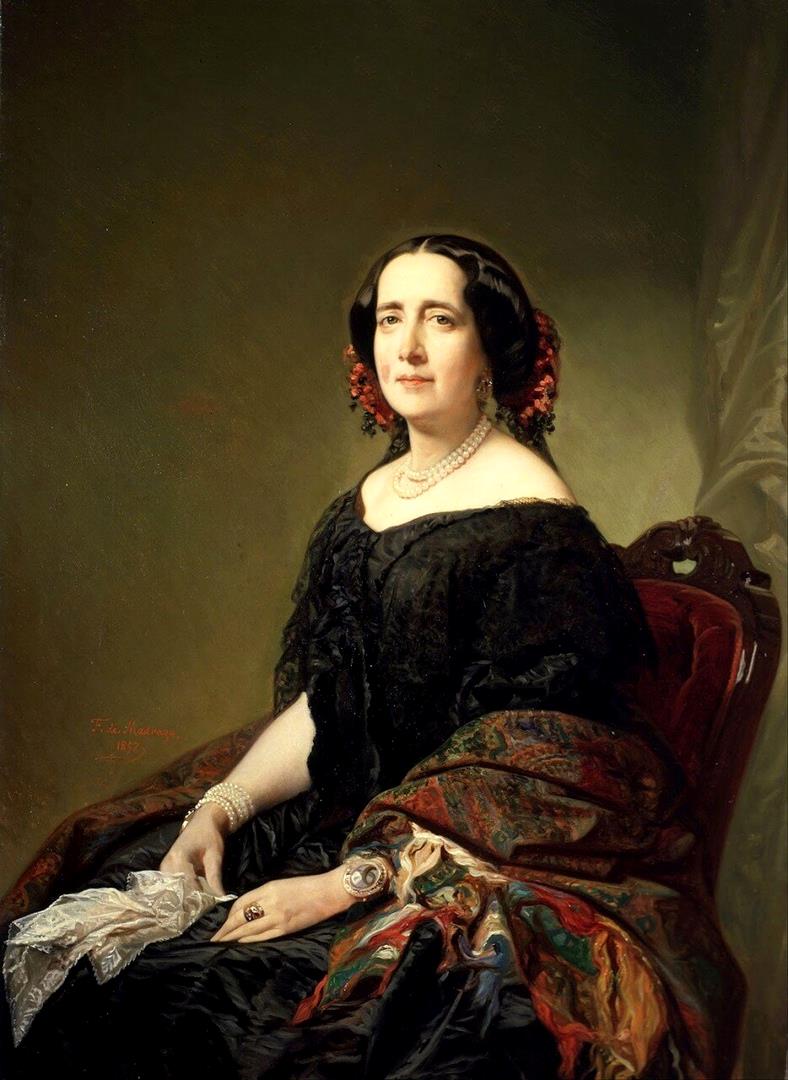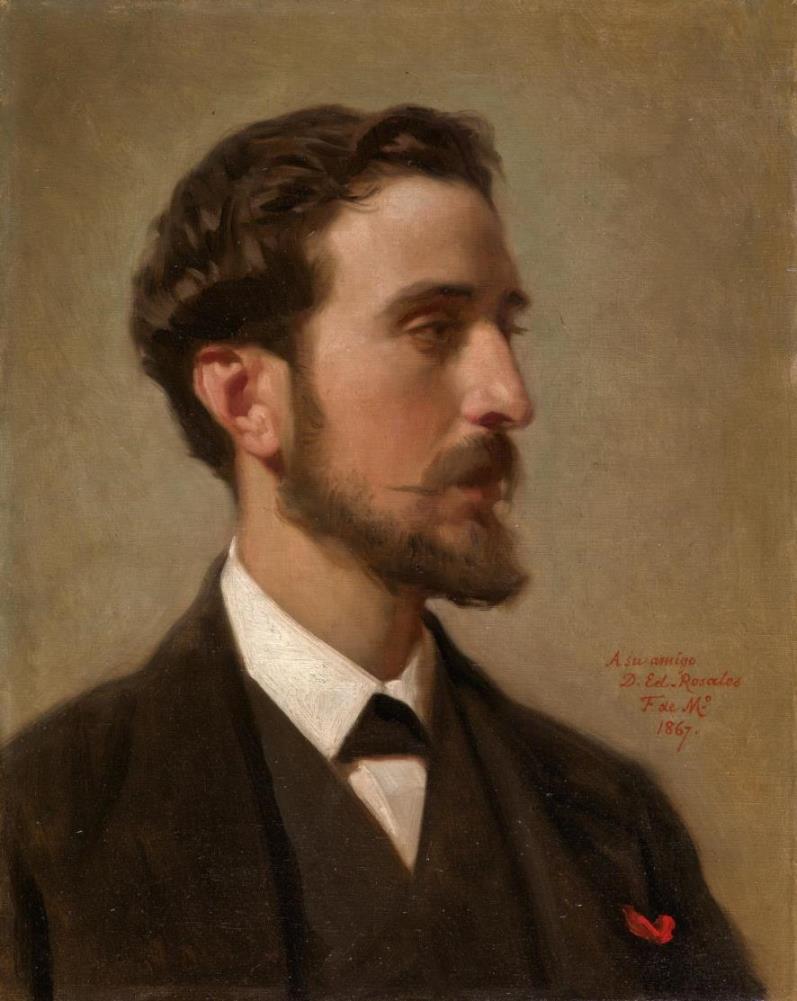Federico de Madrazo y Kuntz's Paintings
Federico de Madrazo Y Kunz (his full name; Kunz is the surname of his German mother) was born in Rome on February 9, 1815, into the family of the Spanish artist José de Madrazo I Agudo. Madrazo is a well-known creative dynasty in Spain: Federico Luis's brother and Federico Raimundo's son were also painters. Federico's daughter Cecilia married an artist, Mariano Fortuny, and their son went on to become a well-known fashion designer, founding his own fashion brand, Mariano Fortuny and Madrazo. As a result, the family is unquestionably creative.
Federico de Madrazo's earliest painting training were, of course, from his father. He did not stop there, however, and enrolled at the Royal Academy of Fine Arts of San Fernando. King Ferdinand VI of Spain established the academy in the middle of the 18th century, and it was originally known as the "Royal Academy of the Three Noble Arts named after Saint Ferdinand," as painting, sculpture, and architecture were studied there. The study of music was later added, and the academy was given its current name. This academy is well-known for its art gallery, which houses a large collection of 16th-20th century Spanish and Western European paintings by Rubens, Correggio, Bellini, Zurbaran, Murillo, Goya, and others. As a result, students have a fantastic opportunity to study and duplicate the work of the old masters, so to speak, without being interrupted by their alma mater.
Federico de Madrazo chose to travel to Paris, one of the world's centres of pictorial culture, in 1832 to widen his horizons and enhance his artistic talents. Franz Xaver Winterhalter, a German artist, one of the most popular portrait painters of the mid-nineteenth century, and a master of secular and court portraits, was there at the time. He was the most influential on Federico de Modraso's growth and creative style. In the same city, de Modraso met the famous and authoritative French artist Jean-Auguste Dominique Ingres, who was once impressed by Nazarene doctrine and presented it to the young Federico. Federico studied with the French artist for a while. Federico de Madrazo resided in Paris and later Rome for several years, experimenting with various techniques and tendencies of painting until he ultimately developed his own style.
Federico de Madrazo returned to Madrid in 1842. He was appointed court painter by Queen Isabella II in Madrid. Madrazo was named director of the Prado Museum and president of the St. Ferdinand Society in 1860. In 1846, Madrazo was awarded the Legion of Honor. Federico de Madrazo's artistic legacy includes several portraits of Spanish royalty, as well as historical and religious paintings. Two of the most famous historical paintings are "The Proclamation of Gottfried of Bouillon as King of Jerusalem on July 23, 1099" and "The Final of the Battle of Cherignol on April 28, 1503" (in the painting, Gonzalo Fernandez de Cordoba, known as the "Great Captain," looks at the body of the deceased commander of the French army of Louis de Armagnac, in the painting, Duke of Nemours).
Federico de Madrazo's paintings are mostly portraiture. Everything is evident in ceremonial pictures; they are done according to all the canons: a sombre attitude, well drawn out outfit and jewellery, and a neutral-official look on the model's face. However, the artist often creates less formal portraits; ladies and children were particularly well-suited to him. There's also a comfy pose, a coquettish look, and a cryptic half-smile (as in the famous portrait of Princess de Vilhees), or vice versa, a displeased expression on the face (as in the portrait of Sabina Spalding), and serious girls pretending to be adults, as well as funny, very young children and animals.
Federico de Modrazo is well-known for his works on painting theory and pedagogy, in addition to his artistic output. After the artist's death, his seminal work on the history of painting in the 18th century was released. Federico de Madrazo lived a long life and died on June 10, 1894 in Madrid, leaving behind a slew of pupils in his wake. Jose Gallegos y Arnos, Anselmo Ginea, Jose Casado del Alisal, and others are among them.






































































Aucun commentaire:
Enregistrer un commentaire